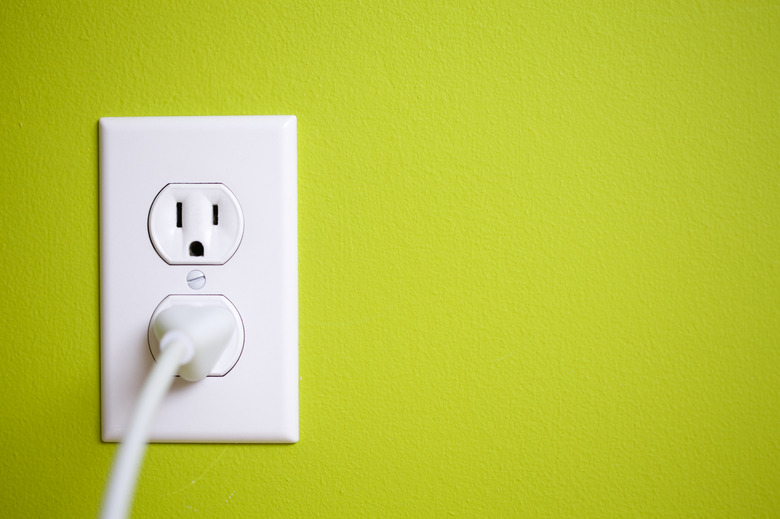How To Disable An Electrical Outlet
We may receive a commission on purchases made from links.
When an electric outlet is live, it means you can plug in a lamp or stereo and turn it on. You may want to cap off an electrical outlet if you have experienced problems with it, if it is located where you don't want an outlet, or if you cannot adequately secure it from children. Whatever the reason, it's not very difficult to disable an electrical outlet as long as you have appropriate know-how and a few simple tools. If you have any doubts about your expertise in the matter, it's better to hire an electrician than to take a risk.
How Electrical Outlets Work
How Electrical Outlets Work
Whether you are interested in wiring an outlet or disabling an outlet, it's helpful to get an overview of how electrical outlets function. Electricity only works in a circuit, and electrical outlets create that circuit in your house. That is, wires carry electricity in a complete circuit from the breaker box where it comes into the home, around to the different outlets, and then back to the breaker box.
Look carefully at a 110- or 120-volt electrical outlet and you will see holes in it. Older plugs may have just two slotted holes, while newer ones may have an additional rounded hole beneath the two. The slotted hole on the left is called "neutral," and the right one is called "hot." The electrical current runs in the circuit, connects to the hot holes of the outlets, and then returns back through the neutral holes in each outlet to complete the circuit to the breaker box.
If you plug in a radio, the hot wire of the outlet lets electrical current flow into the radio, turning it on. The circuit is completed when the electrical current returns to the outlet through the neutral slot on its way back into the circuit breaker.
Electrical Current Protections
Electrical Current Protections
A circuit breaker stops top electric current from flowing if it is dangerous. This could be because the current is too high to be safe for the wiring, or it could be when there are surges of electricity coming through the circuit.
If you have that third hole in your outlet, a ground wire can also offer protection. The ground wire connects from an outlet to the breaker box directly and serves to neutralize electrical surges by sending them into the ground.
Turn Off the Power
Turn Off the Power
To disable or cap off an electrical outlet, your first and most important step is to turn off the power before you get started. Go to the breaker box and flip the breaker to turn off power to the circuit. Then, check the outlet with an outlet or voltage tester. If you don't know how to do this, you may want to consider getting an electrician involved. Turning off the electricity and double-checking the plug before you begin are essential to keep you safe.
Cap Off the Electrical Outlet
Cap Off the Electrical Outlet
Use a screwdriver to take off the cover plate and the two screws that hold the outlet in place. Then, take the outlet from the wall very gently. The next step depends on how the wires are connected to the outlet. If they are connected by screws, unscrew them, but if they are plugged into the back of the outlet, look for the hole or slot next to each wire. Press a small tool into the hole and pull out the wire, or if this proves impossible, snip off the wires with wire cutters to disconnect the outlet.
When the wires are disconnected from the outlet, cap the ends of each wire by screwing on wire nuts, which are little plastic parts made especially for this purpose. If the outlet is not the end of the line, twist together and cap the two to three white wires with a wire nut and repeat the process with the two to three live wires so the power will continue to the next outlet. Wrap electric tape on top of each wire nut and then tape the capped wires together and push in the outlets.
Use an outlet cover plate instead of an outlet cover over the cavity. Position it over the hole and screw it into place. That's all you have to do to cap off an electrical outlet.
